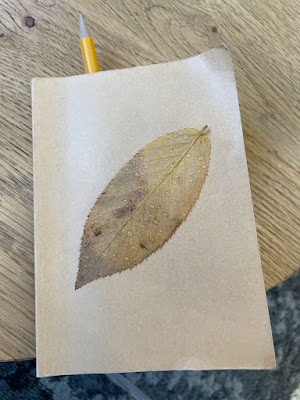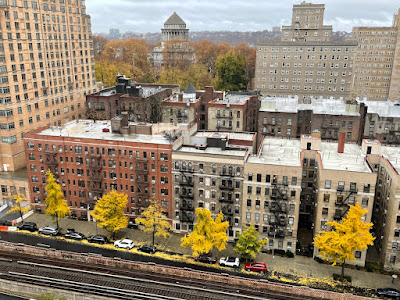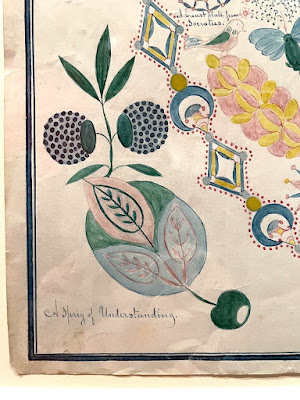 Went tonight to the Transgender Day of Rememb-rance Vigil at Union Theological Seminary, a student- organized gathering. I've not gone to what I learned is known as tee-dor in years past, but in the current season, where the party of our president-elect has put a target on every trans person's back, it seemed the least I could do.
Went tonight to the Transgender Day of Rememb-rance Vigil at Union Theological Seminary, a student- organized gathering. I've not gone to what I learned is known as tee-dor in years past, but in the current season, where the party of our president-elect has put a target on every trans person's back, it seemed the least I could do.
The organizers had placed framed photographs of most of the twenty-eight trans people killed in the US in the past year on two tables in a small sea of flickering LED votives, together with text about "how they lived, not how they died." But projected on a screen was a series of names and photographs of trans people who died around the world, organized by date, and including how their lives ended: shot, strangled, suicide, stabbed, run over, shot, decapitated, burned, stabbed... There were hundreds.
The program included some reflections and some performances. As we came in (a little late), a seminarian was speaking about her fear of dying poor and alone, of "not dying well" ... but since God is most with those most excluded, she reflected, why was she afraid of being where God was most present? Should we not be concerned to live well, not just to die well? A later speaker read the description of the suffering servant from Deutero-Isaiah, re-pronouned, something like this:
they were despised and rejected by others;
a person of suffering and acquainted with infirmity;
and as one from whom others hide their faces
they were despised, and we held them of no account. Surely they have borne our infirmities
and carried our diseases;
yet we accounted them stricken,
struck down by God, and afflicted. But they were wounded for our transgressions,
crushed for our iniquities;
upon them was the punishment that made us whole,
and by their bruises we are healed.... (Isa 53:3-5)
A first musical offering was a tender, quiet improvisation on Celtic harp. In a second, someone performed diabolically difficult settings of Rachmaninof's second piano concerto and Gershwin's Rhapsody in Blue for solo piano, the sound cascading gloriously through the darkened chapel. And all while the slide show continued. The gentle harp evoked the inner beauty of all these rendered ancestors too soon, and the lush gorgeousness of the virtuoso piano seemed a tribute to the courage and vibrancy of the lives they lived, all in the face of ugly incomprehension and murderous hatred.
I can't imagine what it is like to be part of this targeted family, knowing that at next year's TDOR there will be new pictures on the table and slides on the screen, some perhaps of people you knew and loved.
I'd started the day with this prayer, distributed by the Episcopal
Diocese of New York, moved by the power of imagining God calling each by
their chosen name. But that was just abstract. After this vigil I better appreciate the cost, and the glory, of claiming your true name, and know God delights in their living truth and mourns their martyrdom.
 Learned today about the latest developments in the analysis of "climate emotions," nicely watercolored for the Climate Mental Health Network. Emotion wheels are apparently regularly used by psychologists, since it's easier to address emotions if you can name them. (They are aids to recognition only; in reality, one might have several of these at a time, and there's no suggestion of equivalence or proportionality.)
Learned today about the latest developments in the analysis of "climate emotions," nicely watercolored for the Climate Mental Health Network. Emotion wheels are apparently regularly used by psychologists, since it's easier to address emotions if you can name them. (They are aids to recognition only; in reality, one might have several of these at a time, and there's no suggestion of equivalence or proportionality.) 


.jpeg)

.jpeg)








.jpeg)





.jpeg)







.jpeg)



.gif)






.jpeg)





